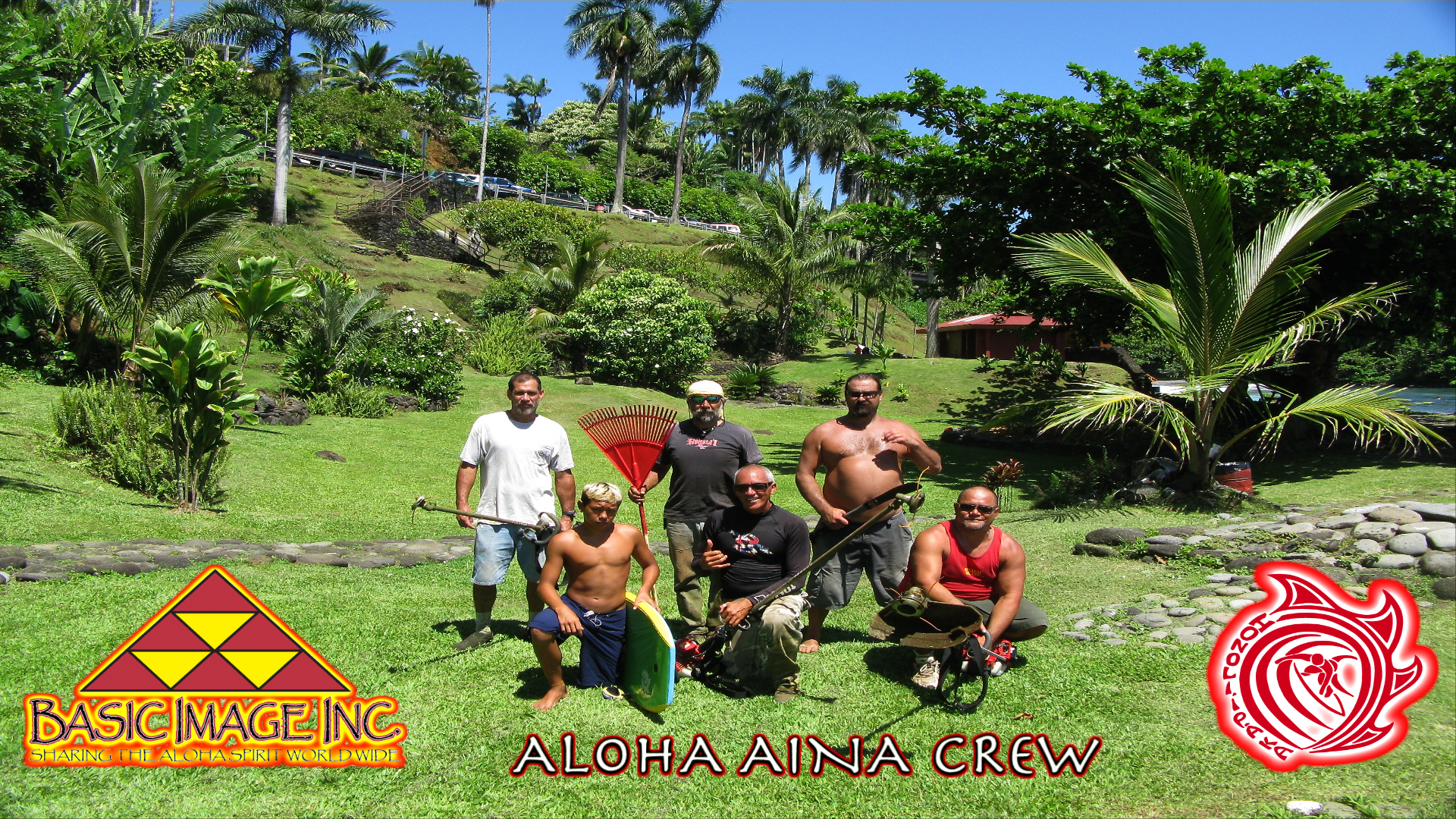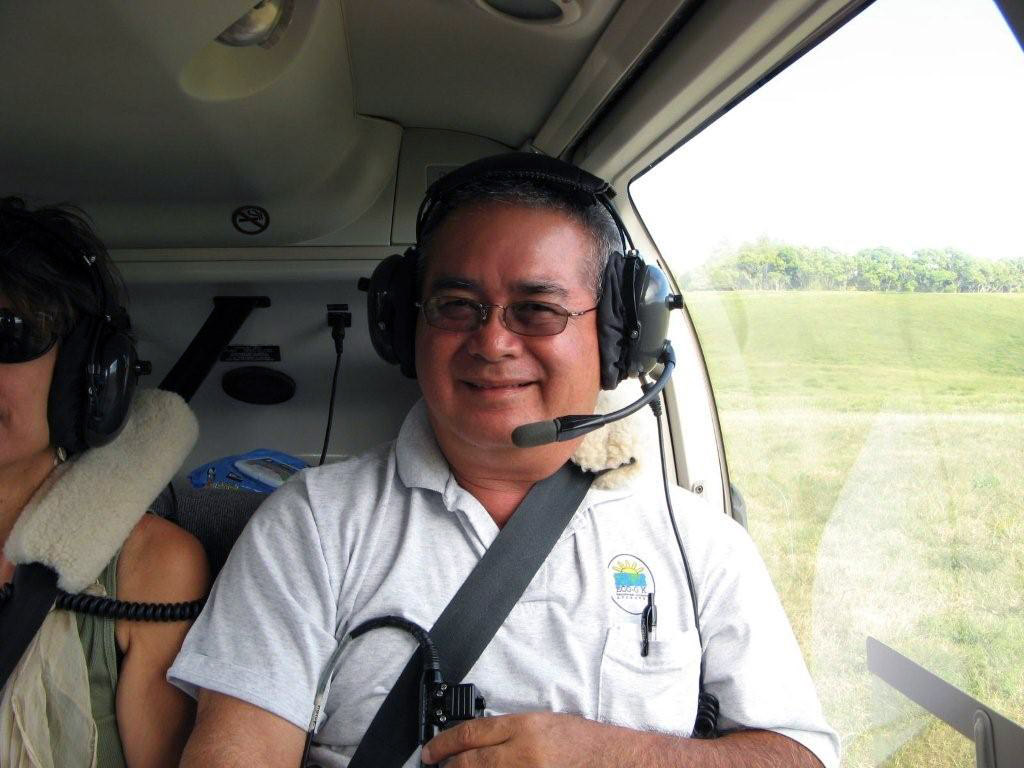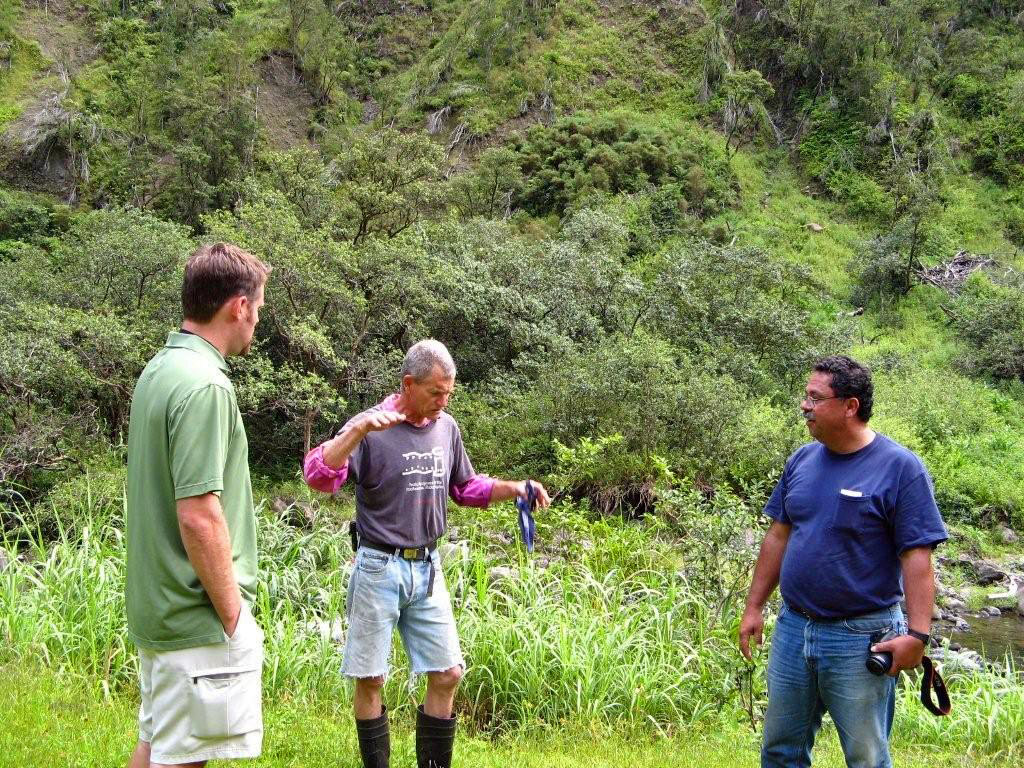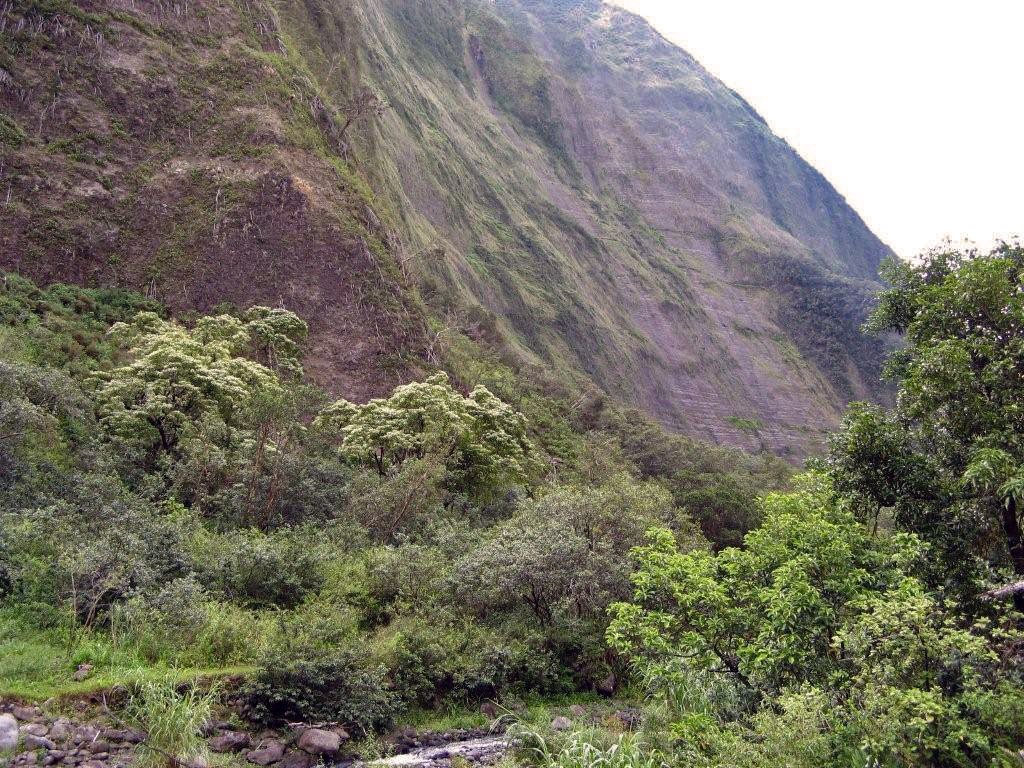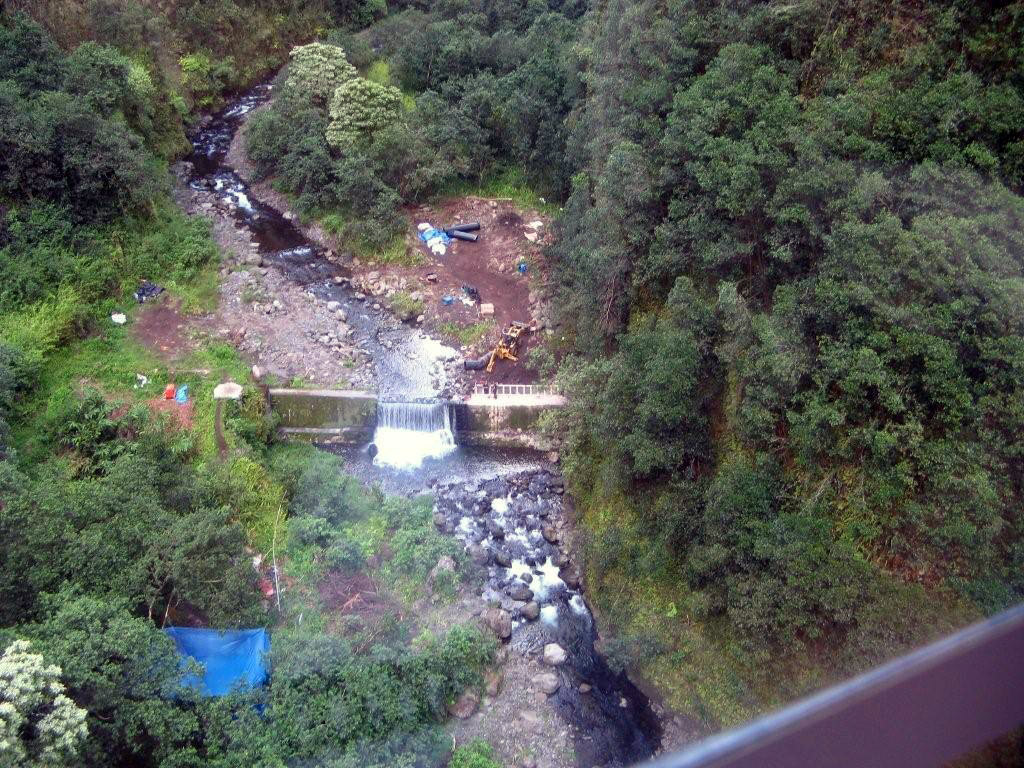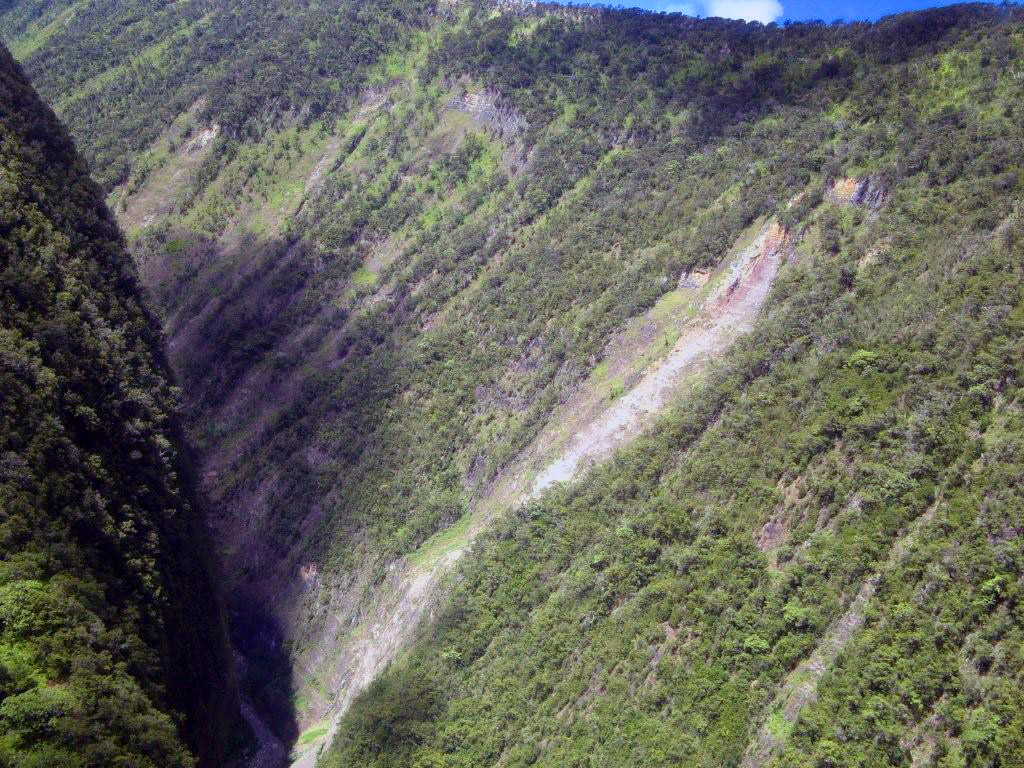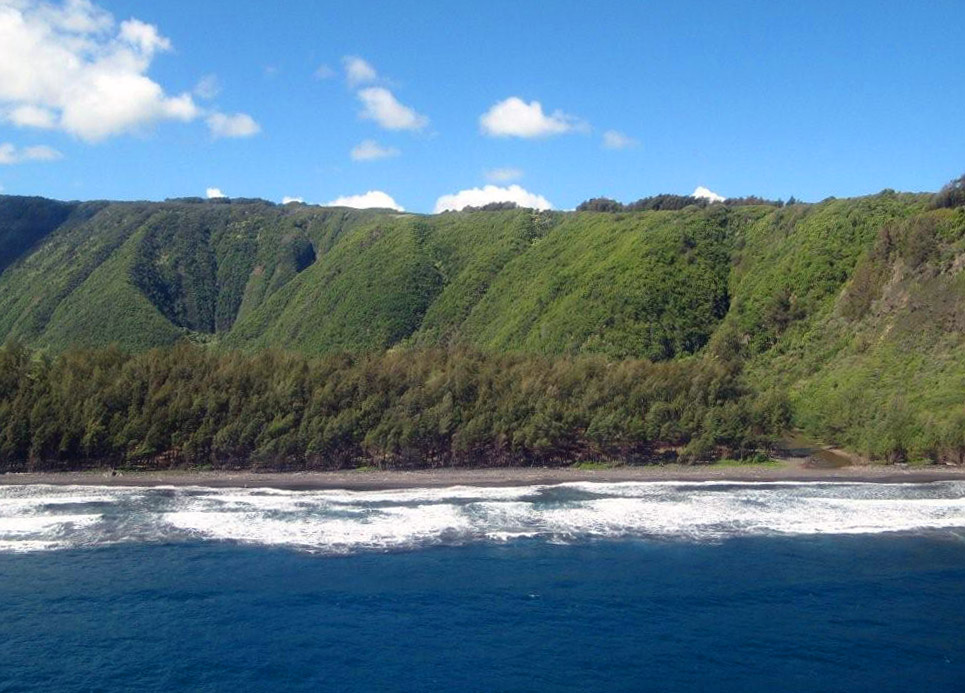It’s not often you run across someone who is, as Richard describes Brudda Skibs, “completely selfless.”
Richard told me that when they conceived of the idea of the E Malama ‘Aina sustainability festival, Brudda Skibs was the first person he thought of. He’s glad Skibs was a part of the festival.
Richard described Brudda Skibs to me by saying he is known for organizing people in the community – mostly young people – to malama the ‘aina. To take care of the land.
“His reputation is spreading,” Richard said, “and other islands are trying to copy his template.”
That’s Skibs kneeling in the center, wearing the black long-sleeved t-shirt.
It’s hard for some people to wrap their heads around what Skibs (real name: Keith Nehls) does. Every Monday he and his volunteer crew clean up the park at Hakalau. Every Wednesday, they work at Honoli‘i Park. Every Friday, they’re at Honomu.
“We do it free,” he says. “With our heart.”
Watch this video, and you’ll understand about his heart. It’s an important speech and I wish every kid in Hawai‘i would watch it.
And read this article about their reclamation of Honoli‘i Park. Here’s an excerpt:
Honoli’i is one of the best surf spots on the Hilo side, hands down, and for years the surrounding park area was overgrown, full of rubbish, and unattended.
No More.
In November 2003 Keith “Skibs” Nehls and 150 other people started a movement that dwindled down to maybe 5 people within five months. His undying spirit carried him through.
Never Give Up echoed in his ears, words that his Grandfather taught him.
Uncle Skibs gives plenty credit to the teachings of his Grandfather, which instilled in him a strong faith in Akua(God) and a dedication to taking care of the aina(land)….
Dramatic Changes have taken place at Honoli’i, the aina glows from the loving touch of its caretakers.
In the beginning, everybody thought that the land was county land, and no one asked; they just started cleaning it.
Turns out it was Kamehameha School lands, and they were thinking of selling it because they saw no way they were going to be able to take care of it.
When they saw what was going on, they approached Uncle Skibs and offered him a lease on the land, 1 acre, for a dollar a year!
See what a little faith does!
Just look at what they’ve accomplished at Honoli‘i. This video shows the same areas in 2003, 2004, 2005 and 2006, and my jaw fell open to see the land go from abandoned to absolutely beautiful. I had to replay it a couple times to see it again.
At Honomu, they are working on cleaning up the old sugar mill. “It’s privately owned by a doctor,” says Skibs. “He got in touch with us and said he was looking for someone to come take care of this place. He said he wants to give back. He wants to hand it over to an entity” where part of the building can be a community center and part of the land down near the ocean can be a park. They’re clearing the top part of the property right now. “We’re showing him we’re real,” he says.
They’re real. Skibs and his crew have been doing this for five years now, and he’s formed a non-profit organization, Basic Image, which last year brought in $46,000 in cash – $40,000 of that from the Hawaii Tourism Authority – and almost $300,000 in in-kind donations.
Kids come help on the weekends, he says, from Hilo High, Kamehameha Schools, Ha‘aheo School, Punana Leo and others. “We give them a tour, talk to them,” he says. “We tell them we built this park and put on events, and you gotta bring your parents, teach others, because when we die, you’ve gotta take over. This is for everybody. It’s not yours. You’re not going to get one special park; you’re doing it to teach our culture. You’re giving back.”
Every year he puts on surf contests at Honoli‘i and Pohoiki. “It’s for the kids, but parents or guardians have to be there,” he says. “Schools help us. They tell the kids: If you come and help us, we’ll put on this free contest because you’ve giving back. The parents come so they know what’s going on.”
Want to help? He says he’s always there around 9 or 9:30 in the morning. Or email him at skibs7@mac.com.
“Everyone has one talent that’s their gift,” he says. “You don’t have to come down to clean up. You give whatever. What you like do? What are you good at? I like you come and do what you like do.”
“We’re all here to do one job. We’re not looking at money or fame; we’re looking at changing this place to the way it used to be.”
Richard says that what Brudda Skibs is doing is “a manifestation of ‘aloha spirit.'”
“This is what is going to keep us together as a society when push comes to shove,” he says. “We need to feel a part of our community, make more friends and stay close to our family.”
“What we’re doing is real,” says Skibs. “We could change this island. We’re doing it already. That’s our job right now – the future of our children.”

